

Vol. 38 (Nº 44) Año 2017. Pág. 33
Zhibek NURLANKYZY 1; Faya SHULENBAYEVA 2; Bazarhan RUSTEMBAYEV 3; Bakytgul AİNAKANOVA 4; Aigul KAZKENOVA 5
Recibido: 15/07/2017 • Aprobado: 25/07/2017
3. Data, Analysis, and Results
5. Implications and Recommendations
ABSTRACT: In the agricultural sector of Kazakhstan’s economy sheep farming plays a key role due to the necessary natural conditions. Sheep farming provides meat, meat products and wool, making its development a priority. The problem of the industry is that the recent falls of its profitability the increase in production costs and the decline in sales prices, which requires the implementation of reforms in the agricultural sector. The article gives an economic analysis of the sheep industry in Kazakhstan. It presents the tendency of the internal market of lamb sales. The authors determine the basic problems of sheep breeding industry at the present stage. They carried out a SWOT-analysis of the strengths and weaknesses of sheep farming in the future. As a result, they identified promising areas of sheep industry reforming such as the introduction of innovative technologies, development of new markets and the creation of a new marketing strategy. |
RESUMEN: En el sector agrícola de la economía de Kazajstán la ganaderíaovinadesempeña un papel clave debido a lascondicionesnaturalesnecesarias. La cría de ovejasproporciona carne, productoscárnicos y lana, haciendo de sudesarrollounaprioridad. El problema de la industriaesque la recientecaída de surentabilidad el aumento de los costos de producción y la disminución de los precios de venta, lo querequiere la aplicación de reformasen el sector agrícola. El artículo da un análisiseconómico de la industriaovinaenKazajstán. Presenta la tendencia del mercado interior de lasventas de cordero. Los autoresdeterminan los problemasbásicos de la industria de cría de ovejasen la etapa actual. Realizaron un análisis FODA de lasfortalezas y debilidades de la ganaderíaovinaen el futuro. Como resultado, identificaronáreasprometedoras de reforma de la industriaovina, como la introducción de tecnologíasinnovadoras, el desarrollo de nuevosmercados y la creación de unanuevaestrategia de marketing. |
The agricultural sector of Kazakhstan’s economy is the state resource development potential (Batsuh, Minzhigdorzh,& Zhigzhidpurev, 2013). Sheep industry plays a key role in livestock sector in providing raw materials for industrial processing, ensuring the needs of food supply for the population, as well as the production of final competitive products for sale on the international market.
The reforms in the agricultural sector of Kazakhstan's economy in the economic relations market formation have led to the loss of livestock development potential, in particular sheep industry (Ombaiev, Musabaev & Khamzin, 2013, pp. 86-90). Sheep, compared with the grain industry, is a low-profit business. The return on investment costs is made in 2-4 years, the complexity of the production cycles is high. For the production of quality products, sheep industry requires using modern technological methods of final products processing, qualified maintenance of all production processes, permanent increase in the cost for feeding sheep as a result of feedingstuff market price volatility. These requirements have led to the exodus of producers from the effective production in sheep farming. The potential of sheep farming development in the future is currently very low.
The economic role of sheep production in Kazakhstan is determined by its quantity and quality, compliance requirements of the market and the cost resulting from its production technology. The variety of natural and economic conditions of certain regions is the potential for the effective sheep breeding. The presence in the land fund of up to 80% of pasture and grassland for feeding and walking the sheep in Kazakhstan is the predominant factor of production, as compared to other countries in the international division of labor (). The use of various technological schemes for obtaining high-quality wool from sheep production, irrespective of the breeding area, includes the use of breeds with high genetic potential of productivity, the presence of up to 80% flock of queens, early gimber mating, year-round full-feeding, intensive young-stock breeding to be realized in the year of birth, optimal zoohygienic conditions of sheep husbandry and health preservation (Versus GPS Tracking, 2010, pp. 279-300). One of the most important conditions for the successful development of sheep farming in the market economy is to reduce the cost of all types of products. This leads to the conclusion about the need for research in the sheep industry in Kazakhstan to identify reserves of its development.
In Kazakhstan, the issues of sheep breeding development, improvement of the economic efficiency of products, the comprehensive mechanization of production processes in sheep were studied by Batsukh, Minzhigdorzh&Zhigzhidpurev (2013), Ombaiev, Musabaev&Khamzin (2013, pp. 86-90). However, the economic functioning problems of the industry in the current market conditions, analysis of the strengths, weaknesses, opportunities and threats of competitive products production remain little studied.
The Message of the President N.A. Nazarbaiev to people of Kazakhstan “Nurlyzhol is the Way to the Future” on 11.12.2014 indicated the progressive movement of Kazakh society to prosperity as the priority of the national strategic development program. They contain well-reasoned strategic development program, the prognosis for the future of the economy break out from the raw materials sector in the international division of economic spheres to the service and technologies, improving the welfare of citizens, the formation of a systematic approach and the scientific basis for enhancing national competitive brands (Nazarbayev, 2014).
According to experts, in modern times, the most important change in the macro-economic theory was the strengthening of the relationship between the economies of individual countries (Abdymanapov et al., 2016, pp. 1033-1049). Now it makes no sense to study economies of the US, Europe or Japan, without regard to their great interdependence (Land,& Robinson, 2013; Knox, Agnew,& McCarthy, 2014). We need a new approach to the study of macroeconomics, corresponding to the latest theoretical advances and changes in the global economy. The main attention should be focused on the issues of the world economy and international aspects of macroeconomic theory, as all countries are linked with each other by means of the international market for goods, services and capital (Sachs,&Larren, 1996; Lenzen, 2012, pp. 8374-8381).
The results indicator of aggregate economic activity in the country is the gross domestic product (GDP). GDP can be determined with the help of production, cost and income approaches (Mankiw, 2014). These three methods give the same result, although each of them considers the GDP from various points of view. Using all three approaches together provides a more complete picture of economic activity in the country than any of them, taken separately (Abel,& Bernanke, 2010).
The production approach defines GDP as the total market value of all final goods and services produced in the country again for a fixed period of time (Coyle, 2015). Based on Kazakhstan’s GDP, a practical state of the economy of the agricultural sector can be considered.
The share of agricultural products in Kazakhstan is 7% of GDP, including crop 55% of production sector and 45%of the livestock industry, which is clearly reflected in Figure 1.
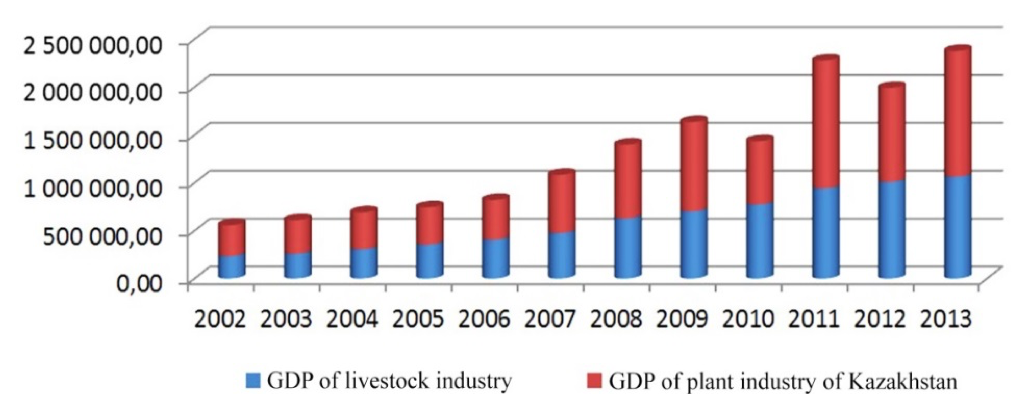
Figure 1. Dynamics of the gross domestic product of agriculture in Kazakhstan, mln. Tenge
The output percentage of the two branches of the agricultural sector of the economy is due to the nature of the climatic zone in which is located in Kazakhstan. A variety of natural resources of the country contribute to the development of a diversified economy. The population of Kazakhstan is characterized by high rates of growth, uneven distribution across the territory (Statistical data of the Statistical Agency), which is explained by climatic conditions and socio-economic conditions.
The main products of manufacturing industries are sheep meat, wool and skin (Ombaiev, Musabaev, &Khamzin, 2013, pp. 86-90). The problem of increasing the production of meat and meat products is one of the strategic tasks of the country in cultivation of Kazakh fat-tailed coarse sheep, characterized by high meat productivity, precocity and ability to make up for good food and other production costs of products. For this sheep breed is also characterized by the most complete combination of production of very valuable felting wool, sheepskins and high-quality lamb (Batsuh, Minzhigdorzh,&Zhigzhidpurev, 2013).
The theoretical and methodological basis of the research include provisions of the agricultural production sustainable development in a variety of forms of economic integration processes and agricultural enterprises development, the works of leading scientists in the field of agricultural production. Validity and reliability of the results can be achieved through the application of general scientific methods of analysis. Conclusions are developed as a result of consistent monitoring of agrarian reform, generalization of materials of domestic and foreign experience, the use of abstract and logical, analytical, concrete historical, economic and statistical methods, in particular, the method of economic groupings; benchmarking, peer review, and reporting of statistical data of the Ministry of National Economy of the Republic of Kazakhstan, the customs service of Kazakhstan and the message of the President of the Republic of Kazakhstan.
Based on the study of the agricultural sector trends in the sheep industry and the economic indicators level of production for the period from 2002 to 2013, it was found that there is an supply increase in sheep industry final products. During this period the production of lamb in slaughter weight in all categories of farms increased from 115 thousand tons in 2002 to 146.3 ths. tons in 2013. The volume of skins production increased from 5567.4 thousand units to 7571.8 thousand units, production of wool, for the same period increased from 24.8 ths. tons to 37.6 ths. Tons (Statistical data of the Statistical Agency).
Analysis of the sheep farming production in Table 1 shows that in 2013 it was produced 31.3 thousand tons more lamb than in 2002, sheepskin – in 2013 to 2004.4 thousand units more, wool –12.8 thousand tons more than in 2002. Of all sheep products in Kazakhstan, there is a growth tendency in the production of lamb. Analysis of the economic performance in 2013 shows that, compared with the previous (2012) year, lamb production volume increased by 9.5 thousand tons; sheepskin production reduced to 98 thousand units, production of sheep wool reduced by 0.8 thousand tons.
At the current stage of the agricultural economy, the increase of lamb production occurs in all types of farms. In general, the changes in the production volumes of sheep breeding, average for previous years, can be seen in Figure 2.
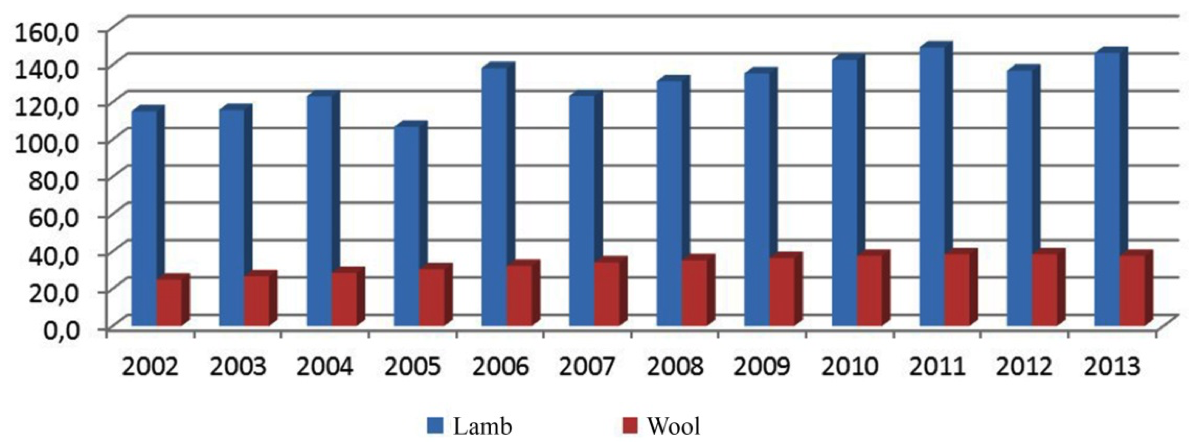
Figure 2. Dynamics of lamb and wool production in all categories of farms
The specific weight indicators of lamb are shown schematically in Figure 3.
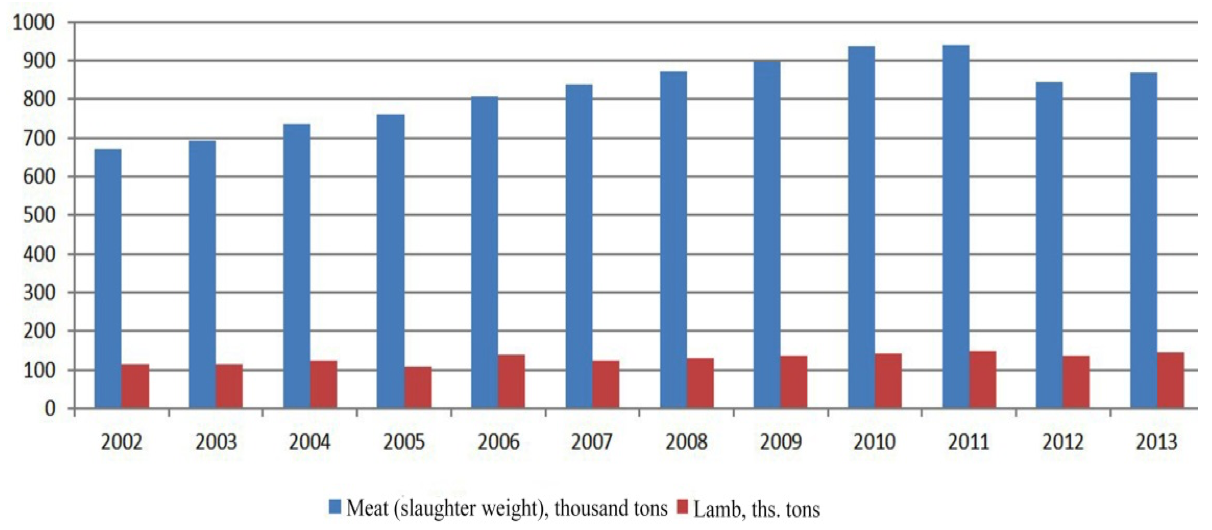
Figure 3. The share of lamb meat in the total meat production volume, thousand tons
There is a constant tendency in lamb production growth since 2002 (672.6 thousand tons) to 2011 (939.4 thousand tons), then in 2012, a decrease in production volume by 95.4 thousand tons in relation to 2011 year; in 2013 the increase in production of 27.0 thousand tons in relation to 2012. Production of sheep skins for the analyzed period is an unstable trend: since 2002, the growth observed in 2009 with 5567.4 to 7263.2 thousand units, then in 2010 there is a decline in production to 7168.7, in 2011, 2012 increase to 7519 and 7669.8, respectively.
The analysis of Figure 3 shows that the proportion of lamb meat in the total meat production in Kazakhstan in the period 2002-2013 years is 16% on average. However, the level of lamb meat production is still low, due to the low profitability of the industry. In 2013 lamb consumption per capita was 8.6 kg (Statistical data of the Statistical Agency).
Local lamb production completely covers the needs of the population. The actual per capita consumption of lamb among population is 8.65 kg per year, while the minimum recommended rate is 8.3 kg / year. Wool production per capita is inadequate, it is 0,002 kg., at a rate of needed 1.5 kg. As a result, according to economic indicators of wool clip per capita, sheep industry has a resource potential of development.
Sheep population analysis during the studied period shows that their increase is at farms which, in fact, are the new market-oriented enterprises. The experience of developed economies-manufacturers of sheep products shows that this is a common form of sheep farming. In 2013, this category contained 17560.6 thsd., which makes 69.2% of the total population in this category of farms (Statistical data of the Statistical Agency).
The greatest relative weight of sheep can be found in the South-Kazakhstan oblast – 20.829% and Almaty oblast – 17.978%, in Zhambyl oblast – 13.249%, and the East-Kazakhstan oblast – 12.569%. This economic zones have favorable climatic conditions for the pasture-feeding of sheep. A distinctive feature of the agricultural land in Kazakhstan is that the total amount of more than 80% are the pasture fund, which is 181 million. ha, and almost 70% of them are located in the arid and semiarid areas, where the found their origin, formation and development. Therefore, meat and mutton-fat sheep farming economically is the most favorable direction in terms of the effective use of the vast pasture areas of the country. In connection with this, large areas of desert and semi-desert pastures have the essential economic importance.
Economic analysis of the industry suggests that the sheep performance indicators are not high. So, in 2013 the average annual wool clip in the public sector of the economy was 2.5 kg, at the farms of the population – 2.6 kg, while the country with the sheep farming development had 5.0 kg or more. During the period 2002-2013, the average annual wool clip on 1 sheep on farms has decreased by 35.3% and in households by 9.5 percent.
Great influence on lamb production have the rates of broodstock population, herd reproduction and mortality. The mortality rate in 2013 was 2.4%, it is 26.2 thousand heads to the herd turnover. The proportion of ewes in the herd is maintained at 55.1%, as it is one of the important conditions for maximum mutton production. With the increase of their number and improving the performance of their reproduction increases the volume of lamb production. The number of ewes and gumbers is 9803.5 thous. heads, representing 56.2% of the total population (Statistical data of the Statistical Agency).
The reproducible ability of animals is one of the most important economic indicators, which characterizes the intensity of livestock. In 2013, agricultural enterprises received 9268 thous. heads of offspring. Out 100 ewes they had 98 offspring lambs on average (Figure 4).
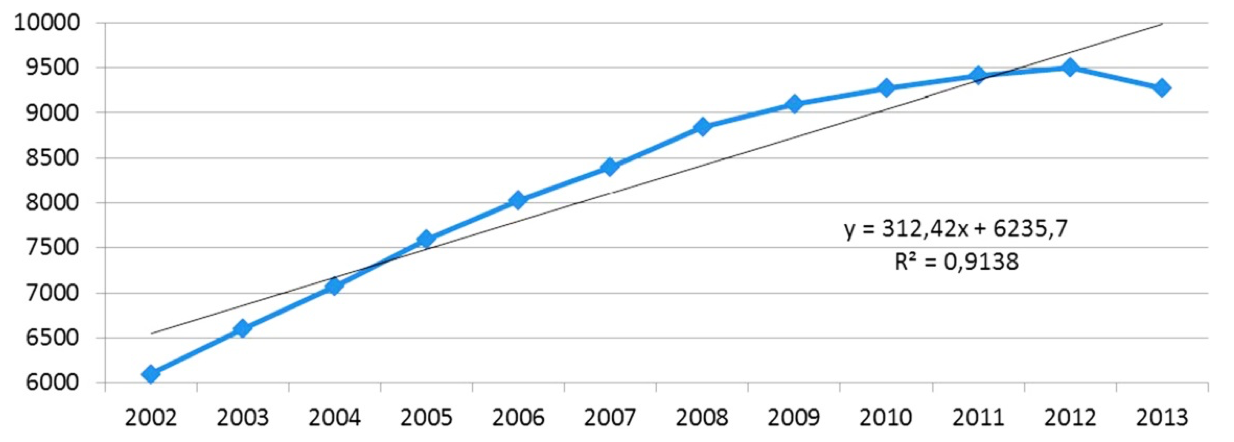
Figure 4. The levelled values indicators for lamb crop in 2002-2013, ths. Heads
Figure 4 shows that the population of lambs during the period from 2002-2013 years has risen by 66%. According to the regression equation y = 6235 + 312,4x, annual population growth rate of lambs is 312.4 thous. heads.
Price is an important element of the mechanism of market economy, the leading economic tool that affects the efficiency of the enterprise. If in the conditions of planned and administrative economy the pricing was carried out at the national level, in market economy it was moved to the enterprise level.
The study of foreign experience of farming economy suggests that, historically, farmers, particularly in the US, often faced the price problems and comparatively low income fluctuations. Leading US economists, C.R. McConnell and S.L. Brue, made the following conclusion in their research: “We determined a short-term farm problem of annual fluctuations in prices for agricultural products and farmers’ income, and a long-term farm problem, leading to the fact that agriculture now represents the shrinking industry”.
According to scientists, a short-term problem is the result of: 1) inelastic demand for agricultural products; 2) product output fluctuations by farmers; 3) the demand curve shifts. The long-term problem: shrinking industry.
To the price inelasticity of demand, two other characteristics of the agricultural markets must be added:
1. With time, due to technological advances, the supply on agricultural products has increased dramatically.
2. The demand for agricultural products over time grew relatively slowly, since it is not an elastic income.
The growth in demand for agricultural products was much lower than the growth of its supply, caused by technical progress. Why did it happen? The answer to the question lies in the two main factors, determining the demand for agricultural products: income and population growth (McConnell,& Brue, 2002).
Study of the relationship between the various distribution channels prices to the average price shows the profitability of distribution channels for the manufacturer. For example, the processors offer one of the highest prices, both on wool and lamb. On the cash market, the manufacturer sells wool at a price that is slightly below the average prices of the commodity market in the course of the year. To identify the price situation in the domestic mutton market, the study analyzed the figures for 2011-2014. Bulk and retail prices for lamb in 2013 totaled 949 and 1073 tenge / kg, which is, respectively, 20.8 and 26% higher than the average level in 2011 (Figure 5).
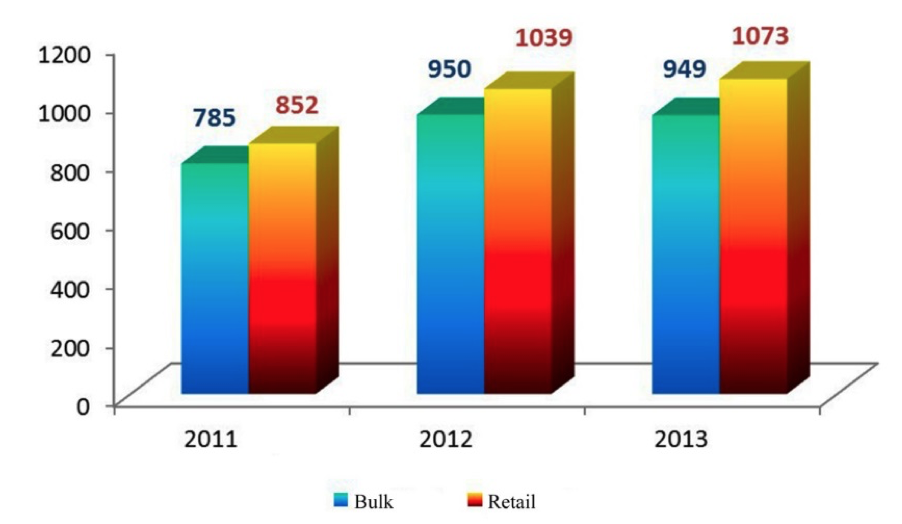
Figure 5.The average retail and bulk prices for lamb
in Kazakhstanfor the 2011-2013., tenge per kg
The reason for raising the price of lamb was the rise in prices of agricultural producers on 1 sheep’s head. Thus, the increase in the price of adult sheep (fat-tailed) in 2013 is by 27% compared to 2011 (Figure 6).
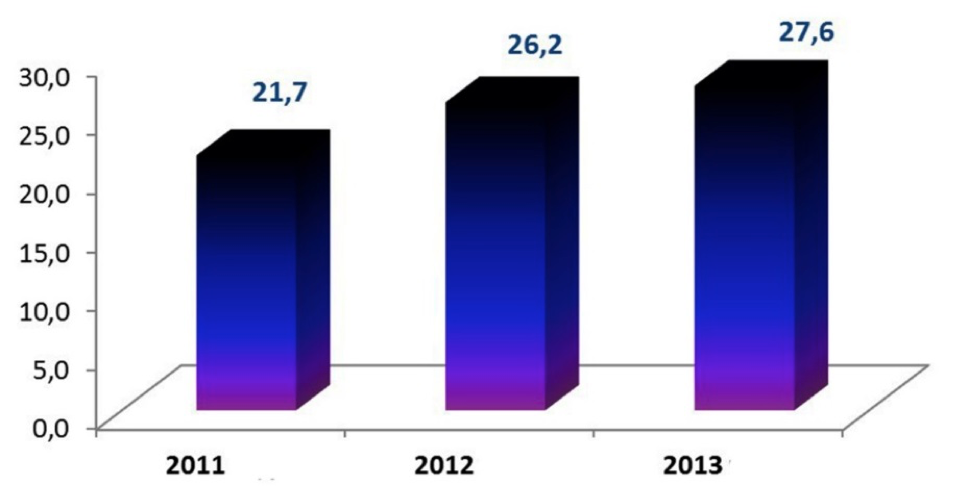
Figure 6.Average prices of agricultural producers in the adult sheep
(fat-tailed) in the Republic of Kazakhstan in 2011-2014., thousand tenge
In 2013, we saw slight fluctuations in prices for lamb (Figure 7). Thus, in 1st half-year, bulk and retail prices were slightly raised in the range of 0.2-0.5%. In the 2nd half-year, the rate of decline was observed to be 0.2-1%. At the end of the year the average bulk price decreased by 2.7% (922 tg / kg) compared to the beginning of the year, and the retail price increased by 1.3% (1068 tg per kg). Average annual bulk price of mutton was 949 tg / kg, retail – 1073 tenge / kg.
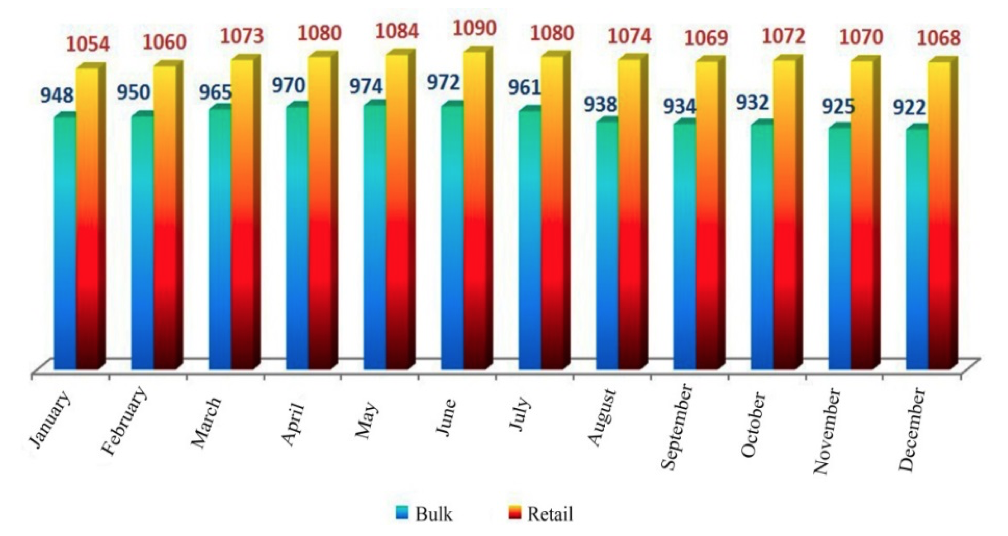
Figure 7. Retail and bulk prices for lamb in the
Republic of Kazakhstan in 2013, tenge per kg
During 2014, the price situation in the lamb market remained stable, the fluctuations were within less than 1%, both upward and downward (Figure 8). The annual average republican price, except for December, was bulk – 932 tg / kg, retail – 1086 tenge / kg.
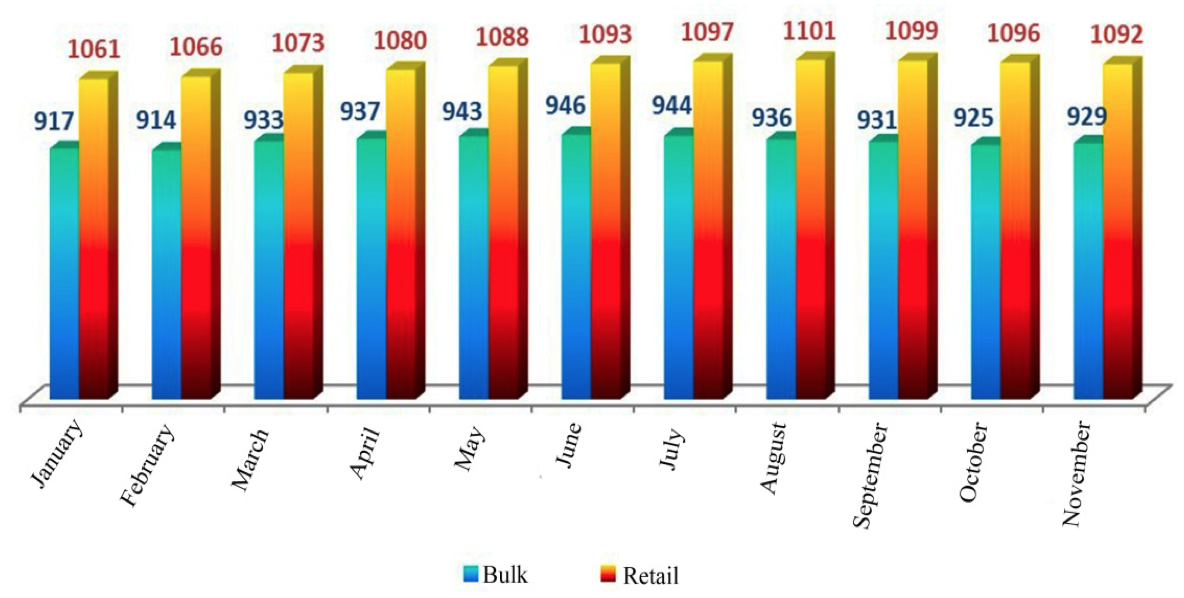
Figure 8.Retail and bulk prices for lamb in the Republic
of Kazakhstan in January-November 2014, tenge per kg
It should be noted that the prices and incomes in agriculture experience severe fluctuations over a short time, since inelastic demand turns small changes in agricultural production and demand into fairly large changes in prices and incomes.
US technical progress over time led to a sharp increase in supply of agricultural products. The growth in demand for agricultural products has been relatively moderate, as the demand is inelastic in income and population growth has been quite slow. The combination of supply’s significant growth with a slight increase in demand has made US agriculture a shrinking industry (McConnell,& Brue, 2002).
In the production of sheep farming products the exported product is mainly mutton. International trading economy includes the factors that determine export and shows the goods classification. Consequently, one must specify the two main factors that determine export.
First, the most important factor is connected with the presence of transport costs, which creates natural barriers to trade. The smaller is the proportion of transportation costs in total production costs, the more likely that the product will be sold on world markets. Products with very high cost per unit of weight and consequently with low specific transport costs are likely to be exported. The main example of such a product is gold, as its price is almost the same in all major world markets.
Another extreme case is hairdressing: in New York, a haircut costs $25, and in New Delhi - only $5. High transport costs make these services unexported. Many types of services are characterized by a high level of transport costs per unit of the offered service. Technological advances in the field of communications have allowed creating the world market of a range of financial services, including banking and insurance. Indeed, the export of services from developing economies in recent years is growing rapidly, especially in areas such as data processing, design, software development and tourism. For example, workers in Jamaica, Manila and South Korea are committed to entering information into the computer networks of the largest multinational companies, located in the United States.
The second factor, determining the exported goods, is related to the degree of trade protectionism. Tariffs and trade quotas may hinder the free movement of goods across national borders, even at low transport costs. The higher the artificial trade barriers are, the lower is the probability of exporting a product (Results of the initiation phase of the development program, 2015).
The Local market shows mutton consumption growth dynamics due to increased production. Import and export of production is negligible and has no effect on the market situation. Mutton production in Kazakhstan fully provides for the population consumption (The customs information portal).
Considering the main trends of sheep breeding industry development in Kazakhstan, we can move on to the formation of the SWOT-analysis. Significant factors and events are divided into four categories: strengths; weaknesses; opportunities; threats (Kotler, 1991) (Table 1).
Table 1.
SWOT-analysis of the factors, influencing the strategic development of sheep farming in Kazakhstan
S – Strengths:
|
W – Weaknesses:
|
O – Opportunities:
|
|
Using the SWOT-analysis matrix allowed a more detailed analysis of the strategic development of sheep industry, as well as to work out the strategy direction for all subjects of market production and sheep products sales, as follows:
A logical justification for agriculture subsidies in the production process was proposed by American scientists-economists, who for quite a long time put forward a lot of arguments in favor of granting subsidies to US farmers (McConnell,& Brue, 2002):
1. Farmers belong to the relatively poor layers of population, despite the fact that the products of their labor are universally demanded, and therefore they can raise prices and earn higher incomes at the expense of state aid.
2. Farm, and especially a “family” one is the foundation of American society, and it should be supported as a “way of life”.
3. Farmers are constantly exposed to natural hazards - floods, droughts, pests, which are not subject to other sectors and from which, for the most part, one cannot be fully insured.
4. By selling their products, farmers face a perfectly competitive market, so they have to buy in the areas with a significant market power. Most of the firms, in which farmers buy fertilizers, farm machinery and fuel, have some control over their prices. In contrast, farmers, while selling their products, are fully in the market’s power. Agriculture is the last stronghold of perfect competition in the economy, so it requires government assistance to counter the arising unfavorable terms of trade.
Consequently, for the innovative development of sheep farming, in Kazakhstan were created breeding subsidy programs. Currently, the republican budget carries out subsidies to agricultural producers for the cost of mutton and fine wool production, the purchase of breeding sheep, breeding management of types and species of breeding animals. The state support of the sheep industry over the past 5 years has increased more than 15 times.
Sheep breeding industry development in Kazakhstan should be based on the strengths of agricultural enterprises and their capabilities, while taking into account the threats and weaknesses.
Perspective directions of development of the industry are: the deepening of cooperation processes, integration, formation of companies with closed production cycle (from breeding sheep and sheep farming production to selling as a product).
It is necessary to actively use the possibilities of applying modern technologies of sheep cultivation and sheep products processing; to form a marketing strategy to gain domestic and foreign market sales of finished products; to expand research activities in the bio- and nano-technologies in sheep farming; introduce diversification of production, as ways to minimize risks, as losses of certain activities are offset by profits from the other, including retail and service.
The industry has a great need in the public and financial support. Further research should be directed to study the possibility of organizing inter-regional exchange of goods to eliminate the deficit in the regions, where sheep farming is inefficient.
Nazarbayev, N.A. (2014).Nurly – Message from the President of the Republic of Kazakhstan NursultanNazarbayev to the people of Kazakhstan. Astana: Elorda.
Sachs, J.D., &Larren, F.B. (1996).Macroeconomics. Global approach. Moscow:Delo.
Abel, E., & Bernanke, B. (2010). Macroeconomics. St. Petersburg: Piter.
Statistical data of the Statistical Agency of the Republic of Kazakhstan. URL:www.stat.kz
Batsuh, T., Minzhigdorzh, B., &Zhigzhidpurev, S. (2013).The current state and prospects of further development of Mongolia's livestock. Collection of scientific reports XVI PBMCs Agricultural science to agricultural production in Mongolia, Siberia, Kazakhstan and Bulgaria, Ulaanbaatar.
McConnell, K.R., &Brue, S.L. (2002).Economics: Principles, Problems and Policies. Moscow: INFRA-M.
Kotler, P. (1991). Principles of Marketing. Moscow: Progress.
Results of the initiation phase of the development program of sheep distant-pasture cattle rearing in the Republic of Kazakhstan until 2020. (2015). Report on the Programme Committee meeting. Astana, Kazakhstan.
The customs information portal.URL: www.KEDEN.rz
Ombaiev, A.M., Musabaev, B.I., &Khamzin, K.P. (2013).Current State and Prospects of Development of Kazakhstan. Sheep, Goats, Wool, 2, 86-90.
Abdymanapov, S.A., Toxanova, A.N.,Galiyeva, A.H.,Muhamedzhanova, A.A.,Ashikbayeva, Zh.S.,&Baidalinov, A.S. (2016). Government Support of Innovative Business in the Republic of Kazakhstan. IEJME-Mathematics Education,11(5), 1033-1049.
Versus GPS tracking. (2010). Applied ecology and environmental research,8(4), 279-300.
Land, R.B.,& Robinson, D.W. (2013). Genetics of reproduction in sheep. Oxford: Butterworth-Heinemann
Knox, P., Agnew, J. A.,& McCarthy, L. (2014).The geography of the world economy.London: Routledge.
Lenzen, M. (2012). Mapping the structure of the world economy. Environmental science & technology,46(15), 8374-8381.
Mankiw, N.G. (2014).Principles of macroeconomics. Boston: Cengage Learning.
Coyle, D. (2015).GDP: A brief but affectionate history. Princeton: Princeton University Press.
1. Department of Standardization, Metrology and Certification, SakenSeifullin Kazakh Agrotechnical University, Astana, Kazakhstan. E-mail: zhibeknurlankyzy22@gmail.com
2. Management Department,Kazakh University of economics, Finance and International Trade, Astana, Kazakhstan
3. Department of Marketing and Service, SakenSeifullin Kazakh Agrotechnical University, Astana, Kazakhstan
4. Management Department,SakenSeifullin Kazakh Agrotechnical University, Astana, Kazakhstan
5. Management Department,SakenSeifullin Kazakh Agrotechnical University, Astana, Kazakhstan